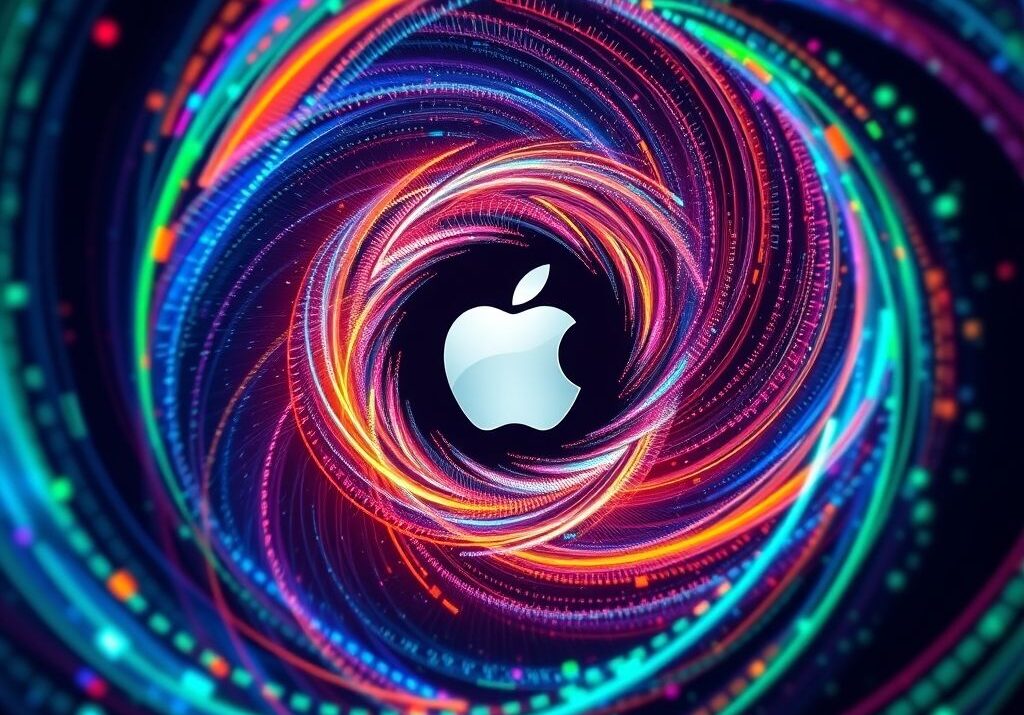Ever felt like you’re arguing with a really clever parrot? That’s kind of the vibe surrounding the whole “AI reasoning” debate right now. I recently stumbled upon an interesting piece from VentureBeat (“Do reasoning models really ‘think’ or not? Apple research sparks lively debate, response”), and it got me thinking. Are these models genuinely capable of reasoning, or are they just really good at spotting patterns and regurgitating information in a convincing way?
The article highlights how Apple researchers put some popular reasoning models to the test, and the results weren’t exactly a slam dunk for the “AI is thinking” camp. Turns out, the way we test these models might be flawed, leading us to overstate their capabilities.
Think of it like this: if you only ever ask a student multiple-choice questions, you might overestimate their ability to write a coherent essay. Same idea here. We need to make sure our AI tests are truly evaluating reasoning, and not just clever pattern recognition.
This isn’t just a philosophical debate. It has huge implications for how we develop and deploy AI in the real world. As OpenAI’s research suggests, larger models don’t always equate to better reasoning. Sometimes, they just become more sophisticated parrots. According to a Stanford study, “AI’s Impact on the Future of Work,” over-reliance on flawed AI reasoning could lead to significant errors and biases in fields like hiring, loan applications, and even medical diagnoses. Scary stuff, right?
We need to be extra cautious about claiming AI breakthroughs (or writing AI obituaries) until we’re absolutely sure our methods for measuring reasoning are rock solid. It all boils down to validating our models with more varied tests. If they can’t handle the shift in environment, how can they serve in real life?
Here are my five key takeaways from this whole discussion:
- Test Design Matters: The way we evaluate AI reasoning is crucial. Flawed tests can lead to inflated perceptions of AI capabilities. We need tests that assess for “generalization” and “transfer learning.” If the models cant shift their understanding when environment parameters are altered, they are not generalizing their learning.
- Pattern Recognition vs. Reasoning: Just because an AI model can produce seemingly logical answers doesn’t mean it’s actually reasoning. It might just be really good at spotting patterns in the data it’s been trained on.
- Beware of Overconfidence: It’s easy to get caught up in the hype, but we need to be realistic about what AI can (and can’t) do. Overstating AI capabilities can lead to misuse and potentially harmful consequences.
- Context is King: Reasoning requires understanding context, nuance, and common sense. AI models often struggle with these areas, highlighting the difference between machine intelligence and human intelligence. As Yann LeCun, head of AI at Meta, eloquently stated, “The vast majority of what people call AI today is really just glorified curve fitting”.
- Continuous Evaluation is Essential: As AI technology continues to evolve, so too must our methods for evaluating its reasoning abilities. Continuous evaluation and refinement are crucial for ensuring responsible AI development.
Ultimately, this Apple research serves as a good reminder to approach claims about AI reasoning with a healthy dose of skepticism. Let’s focus on developing better evaluation methods and understanding the true capabilities (and limitations) of these powerful tools. We’re not quite at the sentient robot stage yet, and it’s important to keep that in mind.
FAQ: Understanding AI Reasoning
-
What is AI reasoning? AI reasoning refers to the ability of artificial intelligence systems to draw conclusions, make inferences, and solve problems in a way that mimics human-like thought processes.
-
How do we currently test AI reasoning? AI reasoning is typically tested using benchmark datasets and tasks designed to assess a model’s ability to understand context, generalize knowledge, and solve problems logically.
-
What are the limitations of current AI reasoning tests? Current tests often focus on narrow domains and specific tasks, which may not accurately reflect real-world scenarios or the ability to reason across different contexts.
-
Why is it important to accurately assess AI reasoning? Accurate assessment is crucial for ensuring the responsible development and deployment of AI systems, particularly in critical applications like healthcare, finance, and autonomous vehicles.
-
What are the risks of overestimating AI reasoning capabilities? Overestimating AI reasoning can lead to over-reliance on AI systems, potentially resulting in errors, biases, and unintended consequences.
-
How does pattern recognition differ from true reasoning in AI? Pattern recognition involves identifying and extracting recurring patterns from data, while true reasoning requires understanding underlying relationships, drawing inferences, and adapting to new situations.
-
What are some examples of tasks that require AI reasoning? Examples include natural language understanding, problem-solving, decision-making, and common-sense reasoning.
-
How can we improve AI reasoning evaluation methods? We can improve evaluation methods by developing more diverse and challenging benchmark datasets, incorporating real-world scenarios, and focusing on tasks that require generalization and adaptation.
-
What role does context play in AI reasoning? Context is essential for AI reasoning, as it provides the necessary information to understand the meaning and implications of data, allowing AI systems to make informed decisions.
-
Are AI models truly thinking, or are they just mimicking human reasoning? This is a complex question with no easy answer. While AI models can perform certain reasoning tasks impressively, they often lack the consciousness, understanding, and adaptability of human intelligence. The extent to which they are truly “thinking” remains a subject of ongoing debate and research.








